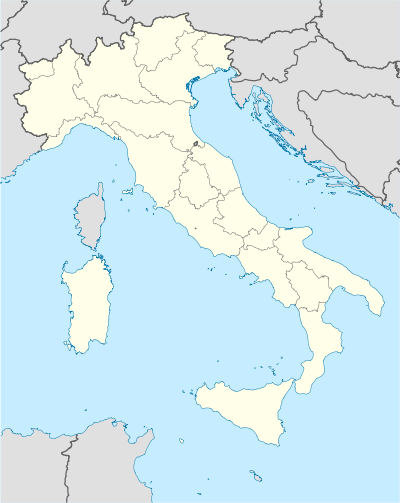Marsala
| Marsala | |
|---|---|
| — Comune — | |
| Città di Marsala | |
 |
|
 Marsala
|
|
| Coordinates: | |
| Country | Italy |
| Region | |
| Province | Trapani (TP) |
| Government | |
| - Mayor | Lorenzo Carini |
| Area | |
| - Total | 241.6 km2 (93.3 sq mi) |
| Elevation | 3 m (10 ft) |
| Population (30 April 2009) | |
| - Total | 82,517 |
| - Density | 341.5/km2 (884.6/sq mi) |
| Demonym | Marsalesi |
| Time zone | CET (UTC+1) |
| - Summer (DST) | CEST (UTC+2) |
| Postal code | 91025 |
| Dialing code | 0923 |
| Patron saint | Our Lady of the Cave (Madonna della Cava) |
| Saint day | January 19 |
| Website | Official website |
Marsala is a seaport city located in the Province of Trapani on the island of Sicily in Italy. The low coast on which it is situated is the westernmost point of the island. It is best known as the source of Marsala wine.
Contents |
History
Marsala occupies the site of Lilybaeum, the principal stronghold of the Carthaginians in Sicily, founded by Himilco in 396 BC after the abandonment of Motya. Neither Pyrrhus nor the Romans were able to reduce it by siege, but it was surrendered to the latter in 241 BC at the end of the First Punic War as a condition of the peace treaty. In the later wars it was a starting point for the Roman expeditions against Carthage, and under Roman rule it enjoyed considerable prosperity. It obtained municipal rights from Augustus and became a colony under either Pertinax or Septimius Severus.
The Arabs gave it its present name "Marsala" which is deriving from the Arab "Marsa Allah" (port of Allah) or "Marsa Ali" ("port of Ali" intended also as "great port" as Ali in Arabian language is synonymous with "great" and the ancient harbour of Lilybaeum was enormous). The ancient harbor that lay on the northeast was destroyed by Charles V to prevent its occupation by pirates. The modern harbor lies to the southeast.
On May 11, 1860, Giuseppe Garibaldi and his "thousand" landed at Marsala and began his campaign to overthrow Bourbon rule in Sicily as a step toward Italy's unification.
Geography
The town is situated on the Mediterranean coast, in the south-western side of Sicily. It lies on the road between Trapani and Mazara del Vallo.
Main sights
Little remains of the ancient Lilybaeum. Fragments of the city walls, squared stones, and some foundations of buildings between the walls and the sea are visible. The so-called grotto and spring of the Sibyl may be mentioned.
To the east of the town is a great fosse which defended it on the land side, and beyond this again are quarries like those of Syracuse on a small scale.
The modern town takes the shape of the Roman camp within the earlier city, one of the gates of which still existed in 1887.
The main street (the Cassaro) perpetuates the name castrum.
This site attracts many archeologists and tourists for the study of Phoenician culture to their immense shipbuilding masterpieces.
See also
- Marsala Ship
- Marsala wine
- Florio
- Phoenicians and wine
External links
 Media related to Marsala at Wikimedia Commons
Media related to Marsala at Wikimedia Commons
|
|||||